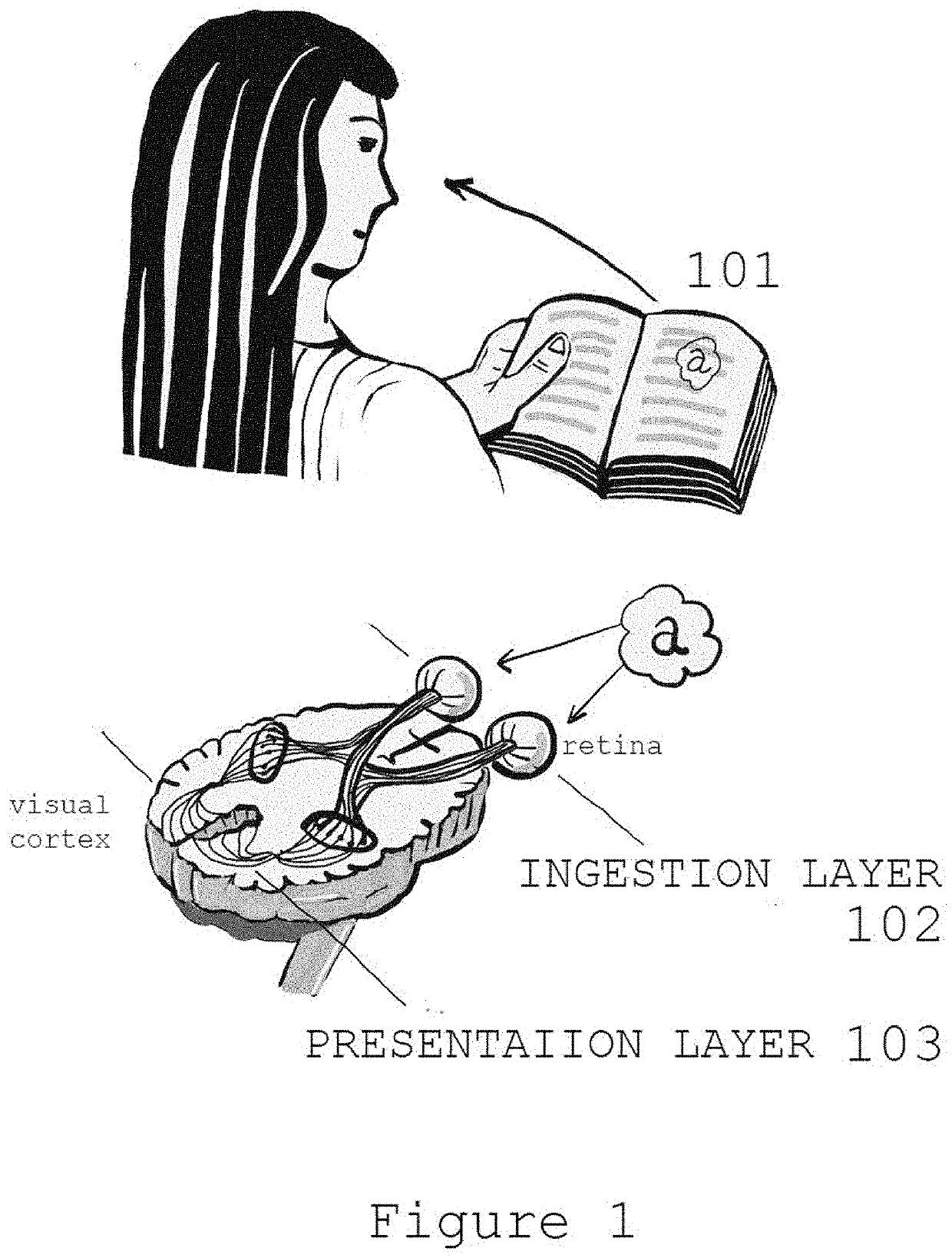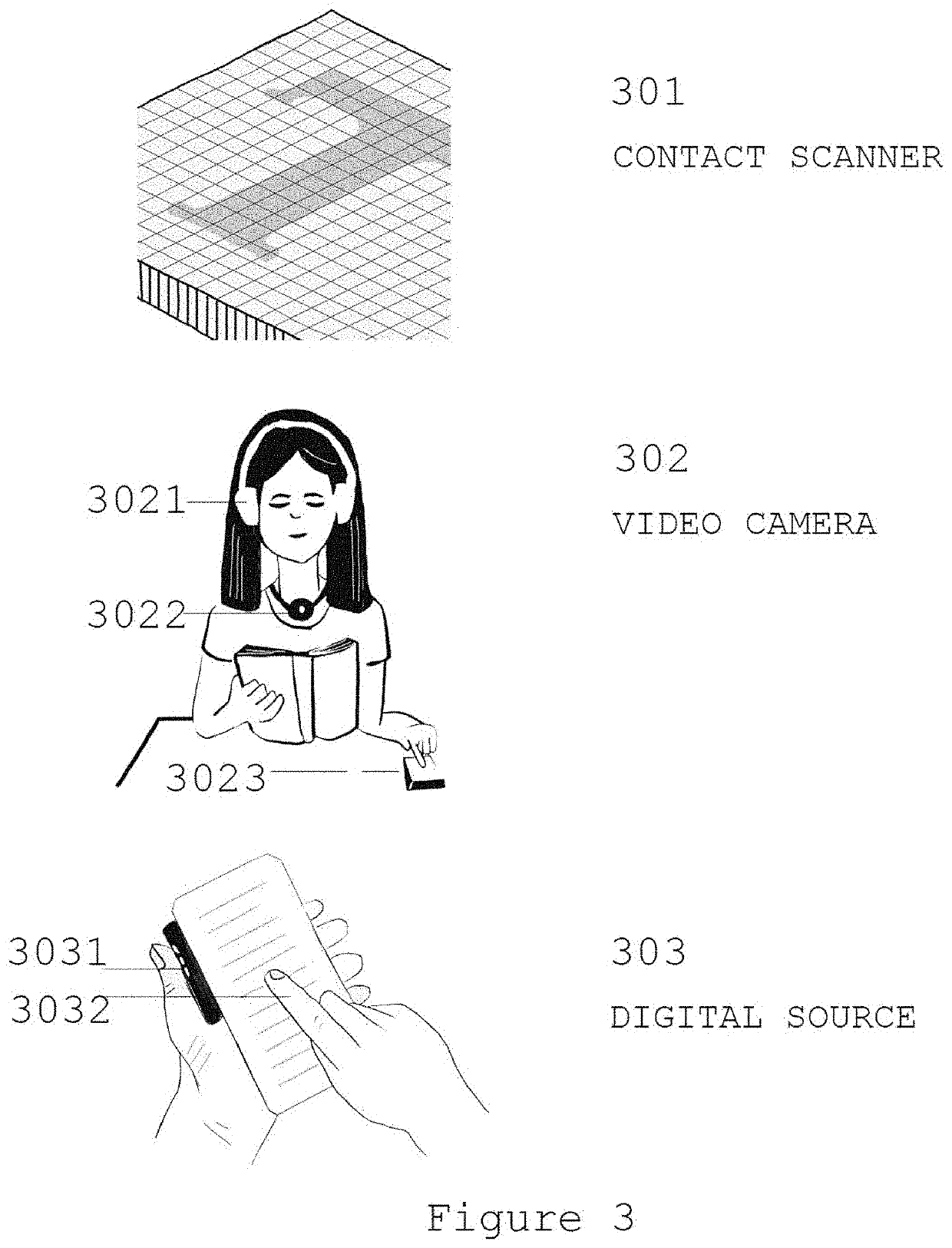Portable Reading, Multi-sensory Scan and Vehicle-generated Motion Input
a multi-sensory scan and vehicle-generated motion technology, applied in the field of portable reading devices, can solve the problems of dwindling braille-literacy, affecting the accuracy of braille reading, and requiring a significant amount of training to master braille,
- Summary
- Abstract
- Description
- Claims
- Application Information
AI Technical Summary
Benefits of technology
Problems solved by technology
Method used
Image
Examples
Embodiment Construction
[0178]Portable Reading Device for Visually Impaired and Other Sensory Limited User Assistance.
[0179]The invention is a system whereby a text can be converted into a stream of the Braille or other types of encoded signals to be delivered in a trans-sensory manner and allows its user exercise control over various aspects of its workflow.
[0180]A set of portable apparatuses is described as an embodiment of the system that allows a visually-impaired, permanently or momentarily, person to ingest a textual element and have the processed information delivered via the tactile / haptic output apparatus in real-time. The control logic and various ways to use the system are described.
[0181]The invention also describes an embodiment in the form of a wearable apparatus that allows the visually impaired user to casually shift her focus of interest among various parts of the textual body—in the way a reader may quickly browse a page in the book by jumping the focus point from a paragraph to another.
[...
PUM
 Login to View More
Login to View More Abstract
Description
Claims
Application Information
 Login to View More
Login to View More - R&D
- Intellectual Property
- Life Sciences
- Materials
- Tech Scout
- Unparalleled Data Quality
- Higher Quality Content
- 60% Fewer Hallucinations
Browse by: Latest US Patents, China's latest patents, Technical Efficacy Thesaurus, Application Domain, Technology Topic, Popular Technical Reports.
© 2025 PatSnap. All rights reserved.Legal|Privacy policy|Modern Slavery Act Transparency Statement|Sitemap|About US| Contact US: help@patsnap.com



